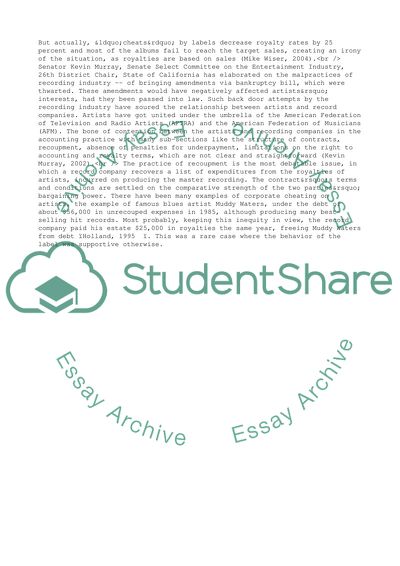Cite this document
(The Recording Industry Practice of Recoupment Assignment, n.d.)
The Recording Industry Practice of Recoupment Assignment. https://studentshare.org/business/1705572-the-recording-industry-practice-of-recoupment-an-economic-analysis
The Recording Industry Practice of Recoupment Assignment. https://studentshare.org/business/1705572-the-recording-industry-practice-of-recoupment-an-economic-analysis
(The Recording Industry Practice of Recoupment Assignment)
The Recording Industry Practice of Recoupment Assignment. https://studentshare.org/business/1705572-the-recording-industry-practice-of-recoupment-an-economic-analysis.
The Recording Industry Practice of Recoupment Assignment. https://studentshare.org/business/1705572-the-recording-industry-practice-of-recoupment-an-economic-analysis.
“The Recording Industry Practice of Recoupment Assignment”. https://studentshare.org/business/1705572-the-recording-industry-practice-of-recoupment-an-economic-analysis.


